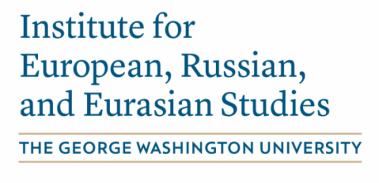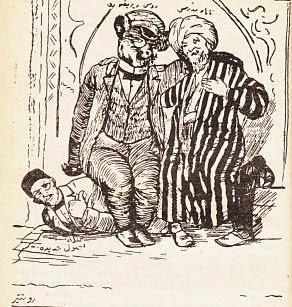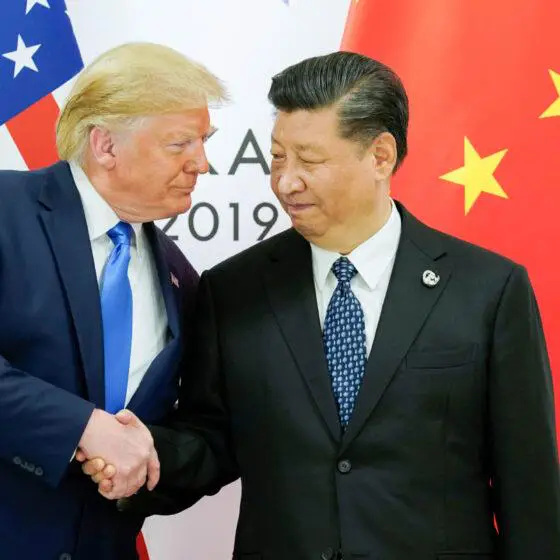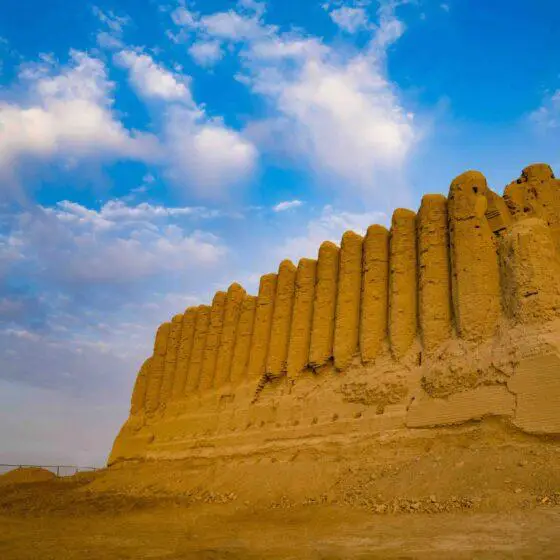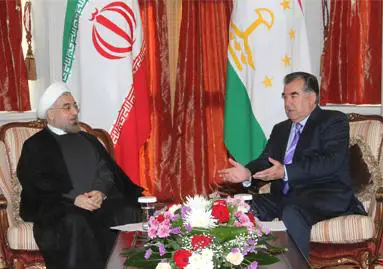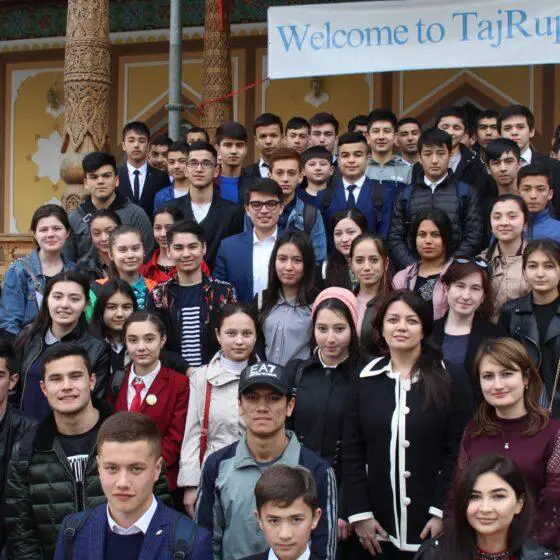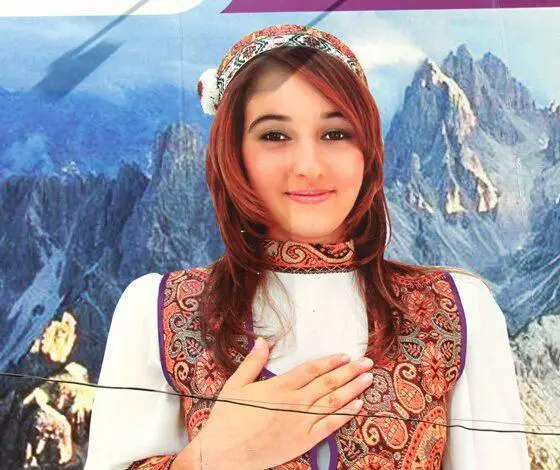
Your new book on history of Tajiks has been published. First of all, please accept our sincere congratulations. Why did you decide to write it and how it differs from other books on history of Tajiks, including the famous one authored by the Soviet politician and historian Bobojon Ghafurov? Shall readers in Tajikistan expect a Russian or Tajik translation?
Thank you. I had thought for years about writing such a book, since Richard Frye told me long ago when I was a student that he would write one and in the end he didn’t. There has never been a book on the history of the Tajiks in any Western language, so mine is the first one. Those which have been published in Russian and Tojiki have many good points, but they are informed by certain ideologies and methodologies which perhaps differ from ours. As for translations, of course I would be delighted but I have no control over that.
Your book starts with an attempt to answer a question of who is a Tajik. Did you find it a challenging question? What is the difference in researching identity of a Tajik in comparison to other contemporary nations, for example, an Iranian, or a neighbouring Uzbek, or a Russian, or let’s say a Canadian? How do we define the ethnicity – based on language, culture, geopolitical area of living, or what? And what is your conclusion and answer – who were/are the Tajiks?
It is a challenging question mainly because it is so politically loaded today. Historically it is not any great mystery, since for most of the past 1000 years it simply meant an Iranian-speaking Muslim. But its meaning today is the result of social engineering from the early Soviet period, and that has resulted in a lot of confusion. Identities today are defined in all the ways you mention, usually in ever-changing combinations. But for my analysis of the meaning of “Tajik”, you will have to read my book!

Yes to your first two questions. Thus, today’s Tajiks are mainly descended from the Sogdians and Bactrians, but also from Persians, Arabs, Turks and others with whom they have been mixing for more than 1000 years. There are no pure races in the world, and DNA studies show no genetic differences between urban Tajiks and urban Uzbeks, for example, though they differ from peoples living in rural and mountain areas.
In opposite of popular narrative in the country regarding the role of Zoroastrianism among Tajiks ancestors before Islam, you downplay it saying it was behind other religions observed in the region, as well as the form of Zoroastrianism observed in Central Asia differed from its birthplace – modern Iran. Also, in religiously highly diverse Bactria, early Sassanids came to destroy all other religious cults to clean the way for the Zoroastrianism. Shall we consider this as the first known religious intolerance in the region?
Yes, the Sasanians—exemplified by the Zoroastrian chief priest Kardir—prided themselves on the violent repression of other religions. The Sogdians appear to have had a very open-minded approach to religion, though unfortunately we cannot say the same today for many Tajiks. By the way the birthplace of Zoroastrianism was not Iran, but Central Asia, although it was in Iran that it became a state religion.
My impression from the book is that that Sogdians of pre-Arab invasion had more connection with China rather than with Sassanids, though formally being under rule of Sassanids. They traded more with China, culturally expanded into China, owned neighborhoods in Chinese cities. What did happen, by the way, with Sogdians remained in China after their home fell to Arabs? Assimilated?
Yes, the Sogdians generally had better relations with China because the Persians saw them as competitors for control of trans-Asian trade. But the Sogdians’ main protectors were the Turks; they developed a mutually beneficial symbiotic relationship which lasted up to the Soviet period. With the coming of Islam Tajiks continued to play an important role in trade with China, and also as purveyors of Islam there. Many of the important medieval Islamic figures in China—Sayyid Ajall Bukhari, for example—were of Tajik origin.
You write Persian was adopted as language of court by Samanids, while most of people in their territory would still speak Sogdian/Bactrian. Doesn’t this opinion contradict to another argument that Central Asia, or somewhere Balkh or Bukhara was the birthplace of contemporary Persian and it did spread further to Iran from here? If not, why would Samanids adopt Persian, not Arabic, the language of science of time and religion, if both of languages were equally foreign to locals?
Persian was the language of Pars, i.e., Persia, mentioned already in the Assyrian records. Probably most of the Muslims who migrated to Central Asia after the conquest were Persians, not Arabs, and they were much closer culturally and linguistically to the Sogdians than the Arabs were.
Samanids were not the first dynasty to grant court status to Persian and even inside the dynasty Ismail was not the first emir to do so. Why Ismail was chosen by current Tajikistan as founder of the first Tajik state? Do you think the fact that the dynasty origins might go to ancestors of modern Kulobis, as argued in your book, and/or the fact that his capital was Bukhara (at time Tajikistan – Uzbekistan relationships were tense), played a role in choosing him?
Well, it is a bit of an arbitrary choice, but I suppose Ismail was the most prominent and successful of the Samanid rulers so that makes him an attractive candidate for “founder”. Anyway none of the important Samanid cities were in what is now Tajikistan.
Is there any lesson to learn for current Tajik leaders from fail of the Samanids state?
It is not my place to recommend lessons to the current Tajik leaders!
You write “Persianization was a way for Turkic elites to demonstrate their legitimacy as imperial rulers…. Persian was thus confirmed as the language of culture and prestige”. How did the Turkic rulers ethnically identified themselves, what language did they speak, and may we call them saviors of the Perso-Islamic culture after fall of Samanids?
Again, identities are always fluid, never fixed or static, so like everyone else, the Turks identified themselves in whichever way they found most appropriate depending on the context at the moment. They were proud of their nomadic ruggedness and military skills, but when they wanted to present themselves as being cultured, that meant being a Persianized Muslim.
What do you think about all current disputes on ethnicity of scientists and poets of time, as well as heritage claims for cities, like Bukhara, Samarqand, Marv, etc.? If, for example, Imam Bukhari or Avicenna’s native language or first language was Persian, and Persian-speakers of time used to be named “Tajiks”, do Tajiks have right to call them sons of their nation?
I think the native language of Bukhari and Ibn Sina may well have been Sogdian, but they surely learned both Persian and Arabic in their childhood. But by the usage of the time they would have been considered Tajiks, so I see no problem in considering them that way today. The idea of “nation”, however, as it is used now, is much more recent, dating only back to the French Enlightenment. People didn’t think in those terms in the 10th century.
You write that people were bilingual in Persian and Chagatai or another Turkic language throughout of several Middle Ages centuries and argue that they were free to identify themselves as they wished to. What did they use these languages for? Where would they learn these languages? What similarities can we see with current bilingualism of people (Russian + a local language)?
Language use changed over time as a process, not overnight. Persian-Tojiki was the main language at least in the cities but as some Turks left their nomadic lives and became urbanized they learned to speak it. At the same time, thanks especially to the efforts of bilingual intellectuals like Alisher Navoi, Turkish slowly started to shed its reputation as a “rough, barbarian” language. Arguably, however, this process of raising the status of Turkish wasn’t really completed until the establishment of the Soviet Union.
Why did Soviets change name of Persian language to Tajik? Why only Arabic-based alphabets were changed to Cyrillic, while Baltic states, Georgians and Armenians retained their historical alphabets? What was the reason of creating Tajikistan within its current territory and depriving its historical cities from it?
I discuss this in some detail in my book, but the short version is perhaps that in Central Asia the culture and institutions were Tajik, and thus represented the very traditions the Bolsheviks aimed to replace. Islamic modernism, on the other hand, such as that promoted by Ismail Gasprinskii, was associated with Turkophone intellectuals, especially Tatars and Ottomans.
Talking about basmachis, many in Tajikistan and Uzbekistan think of them as marauders and bandits, and I understand that the Soviet propaganda has a big role in this perception. As someone, who knows the history of the region very well as a historian and a scientist, and as someone, not influenced by any propaganda, what do you think of basmachis?
Obviously such judgments are subjective, and generalizations are bound to be misleading. It seems there was a strong “bandit” element among the Basmachis, but they also represented a form of resistance against foreign power that was based on local grievances that were very real. Bandits everywhere often enjoy a degree of popular support for exactly this reason.
You write, “…the elite culture in which nearly all Afghans take pride – particularly the Persian literary tradition, but also music, the arts, formal social interaction and even food – is Tajik”. Don’t you think that this is changing in Afghanistan towards an aggressive Pashtunization of everything, even the Dari Persian language by for example forcing to write the word university as puhantun in Dari, as a sample?
Unfortunately as I note in the Excursus at the end of the book, I have never had the opportunity to spend time in Afghanistan so I really don’t know first-hand what is happening there.
Considering that Tajiks of Uzbekistan has been under forced change of identification for about a century, is there any concern to lose the Persian heritage in historically Persian part of Uzbekistan?
Yes, that is absolutely a concern—something that Richard Frye was very worried about—but perhaps the danger has become slightly less now with the change in government there.
